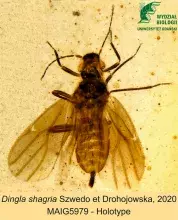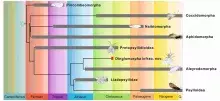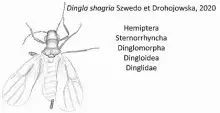A new infraorder of sternorrhynchan bugs described by researchers from the Museum of Amber Inclusions
An international research team with the participation of Dr hab. Jacek Szwedo, prof. UG and Dr Dagmara Żyła from the Department of Invertebrate Zoology and Parasitology UG published a paper – Drohojowska, J., Szwedo, J., Żyła, D., Huang, D.-Y., Müller, P. (2020) Fossils reshape the Sternorrhyncha evolutionary tree (Insecta, Hemiptera.) Sci Rep 10, 11390. https://doi.org/10.1038/s41598-020-68220-x – in which a new infraorder of these bugs was described (Hemiptera: Sternorrhyncha). These insects are phytophages of great ecological and economic significance, currently counting ca. 18700 species, which include aphids (Aphidomorpha), scale insects (Coccidiomorpha), whiteflies (Aleyrodomorpha) and plantlice (Psylloidea). Geochronologically sternorrhynchans date back to the late Carboniferous period, but the early stages of their evolution and diversification are poorly understood, and two known extinct groups – Pincombeomorpha and Naibiomorpha were differently placed in the classification and relationship hypotheses of Sternorrhyncha. The Cenomanian amber inclusions (upper Cretaceous) from the Kachin State (northern Burma), yielded with highly specialized forms, that represent another extinct line within this suborder. These fossil bugs, placed in a separate infraorder, described under the species name Dingla shagria Szwedo et Drohojowska, 2020, are related to whiteflies and plantlice. The publication also presents for the first time a phylogenetic analysis covering all extinct and modern Sternorrhyncha lineages today. Type materials, which are the basis of the description (holotype and one of the paratypes) are deposited in the Museum of Amber Inclusions University of Gdańsk.







